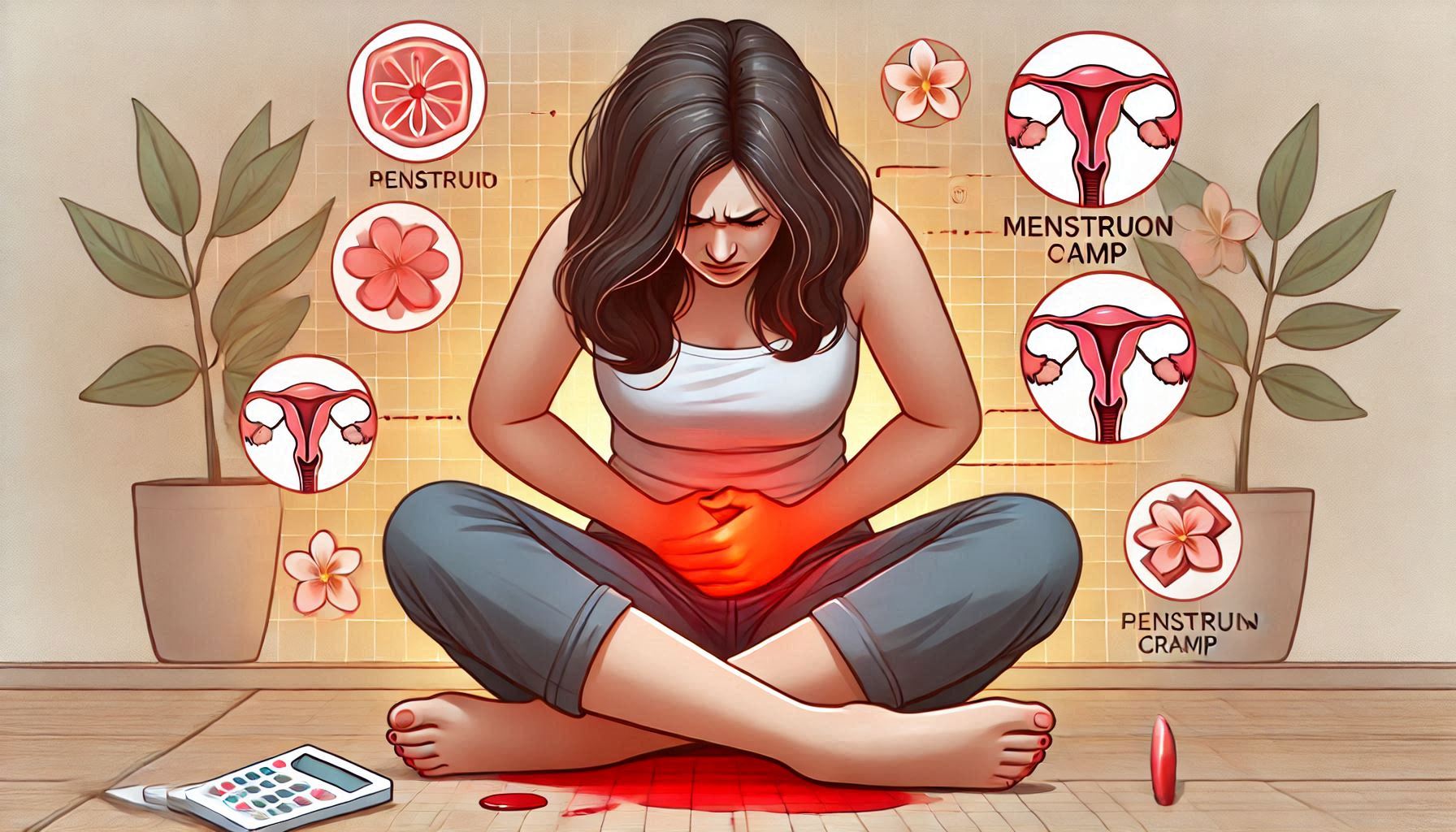Shopping Cart
CloseNo products in the cart.
Filter
closeEasing the Monthly Strain: How to Prevent and Reduce Menstrual Cramps
Author: ItHurts.com
A Comprehensive Talk on Prevent and Reduce Menstrual Cramps

Understanding the Basics:
Menstrual cramps, also known as dysmenorrhea, are a common yet distressing experience for many people with a uterus. While the intensity and nature of this pain can vary, it has a significant impact on daily activities, work productivity, and quality of life. Understanding, managing, and preventing menstrual cramps is essential for better health and comfort. This article explores menstrual cramps in detail and offers actionable solutions to reduce and prevent this pain.
Description of Menstrual Cramps
Menstrual cramps typically manifest as a throbbing or cramping pain in the lower abdomen. They can range from mild to severe and may radiate to other areas, including:
- Lower Back: A dull, persistent ache often accompanies abdominal cramping.
- Thighs: Some individuals experience radiating pain in the upper thighs.
- Pelvic Area: Sharp or constant discomfort can occur in the pelvis.
Types of Menstrual Cramps:
- Primary Dysmenorrhea: Pain caused directly by menstruation, unrelated to any underlying condition.
- Characteristics: Begins 1–2 days before or during menstruation, lasting 1–3 days.
- Intensity: Mild to severe, often accompanied by nausea, fatigue, or headaches.
- Secondary Dysmenorrhea: Pain linked to underlying reproductive health conditions.
- Characteristics: May occur throughout the menstrual cycle.
- Associated Conditions: Endometriosis, fibroids, or pelvic inflammatory disease (PID).
Causes of Menstrual Cramps
Menstrual cramps are caused by the uterus contracting to shed its lining. During this process, the following factors contribute to pain:
- Prostaglandins: Hormone-like substances that trigger uterine contractions. High levels intensify pain.
- Inflammation: Increased inflammation in the body can exacerbate symptoms.
- Nerve Compression: Tight uterine contractions may press on surrounding nerves, causing pain.
- Underlying Conditions: Disorders such as endometriosis or fibroids amplify cramping.
Underlying Reasons for Menstrual Cramps
The physiological and anatomical mechanisms behind menstrual cramps include:
- Uterine Contractions: The uterus contracts during menstruation to expel its lining. Overly intense contractions, influenced by prostaglandins, restrict blood flow and oxygen to uterine tissues, causing pain.
- Inflammatory Response: Menstruation triggers an inflammatory response that increases pain sensitivity.
- Hormonal Imbalances: High estrogen or low progesterone levels can worsen cramps by increasing uterine muscle tension.
- Anatomical Variations: Conditions like a retroverted uterus (tilted backward) can cause more severe menstrual discomfort.
Presentation of Menstrual Cramps
Menstrual cramps typically present themselves in the following ways:
- Timing: Pain starts 1–2 days before menstruation or on the first day and peaks within 24–48 hours.
- Symptoms:
- Cramping pain in the lower abdomen.
- Pressure or aching in the lower back and thighs.
- Accompanying symptoms: Nausea, diarrhea, headaches, or fatigue.
- Pattern: Pain intensity may fluctuate throughout menstruation.
Treatment and Relief for Existing Menstrual Cramps
Relief from menstrual cramps involves a combination of lifestyle changes, home remedies, and medical treatments. Here’s how to manage the pain effectively:
Home Remedies:
- Heat Therapy:
- Use a heating pad or hot water bottle on the lower abdomen or back to relax muscles and improve blood flow.
- Studies show heat therapy is as effective as some over-the-counter (OTC) pain relievers.
- Hydration:
- Stay hydrated to reduce bloating, which can worsen cramps.
- Warm liquids like herbal teas (e.g., chamomile or ginger tea) can soothe pain.
- Self-Massage:
- Gently massage the lower abdomen in circular motions using essential oils like lavender or peppermint for relaxation.
Exercises and Stretches:
- Yoga Poses:
- Child’s Pose: Relieves lower back and pelvic tension.
- Cobra Pose: Eases abdominal discomfort.
- Aerobic Exercise: Light activities like walking increase endorphin levels, which naturally reduce pain.
- Pelvic Tilts: Lie on your back, bend your knees, and tilt your pelvis upward to stretch lower back muscles.
Medical Treatments:
- OTC Pain Relievers:
- Nonsteroidal anti-inflammatory drugs (NSAIDs) like ibuprofen reduce prostaglandin production and relieve pain.
- Hormonal Birth Control:
- Regulates or stops ovulation, reducing prostaglandin levels.
- Prescription Medications: In severe cases, doctors may recommend stronger painkillers or hormonal therapies.
Scientific Research on Menstrual Cramps
Scientific studies provide valuable insights into menstrual cramps and effective treatments:
- Prostaglandins and Pain: A study published in The Journal of Women’s Health found that higher prostaglandin levels directly correlate with more severe menstrual cramps.
- Heat Therapy: Research in Evidence-Based Complementary and Alternative Medicine confirms that heat therapy effectively reduces cramping intensity by improving blood flow.
- Yoga for Pain Relief: A 2016 study in The Journal of Clinical Psychology highlighted yoga’s role in alleviating menstrual pain, particularly poses focusing on the lower back and pelvis.
Actionable Steps for Preventing Menstrual Cramps
Preventing menstrual cramps requires a proactive approach to overall health and hormone balance:
Lifestyle Changes:
- Maintain a Balanced Diet:
- Incorporate anti-inflammatory foods like leafy greens, fatty fish, and nuts.
- Reduce caffeine, sugar, and processed foods, which can increase inflammation.
- Stay Active:
- Regular exercise promotes hormone balance and reduces overall pain sensitivity.
- Stress Management:
- Practice mindfulness, meditation, or deep breathing exercises to reduce cortisol, which may exacerbate pain.
Hormonal Balance:
- Track Your Cycle:
- Use apps or calendars to identify patterns and prepare for symptom management.
- Supplements:
- Magnesium, omega-3 fatty acids, and vitamin B1 have shown promise in reducing menstrual discomfort.
Ergonomic Adjustments:
- If you sit for long hours, ensure a supportive chair and proper posture to prevent muscle strain that could worsen cramps.

Final Thoughts:
Menstrual cramps are a common challenge, but understanding their causes and treatment options can significantly improve quality of life. From heat therapy and yoga to dietary changes and medical treatments, there are numerous ways to alleviate and prevent this pain. Proactive care—such as maintaining hormonal balance, staying active, and managing stress—can reduce the frequency and intensity of menstrual cramps.
Take Control of Your Pain: Remember, everyone’s experience is unique, and it’s essential to find the strategies that work best for you. Consult a healthcare professional if menstrual pain significantly impacts your life. By prioritizing self-care and proactive pain management, you can reclaim comfort and confidence during your menstrual cycle.
ItHurts.com is your ally in your endeavor to live pain-free. We offer guidance, resources, and community support to address chronic pain, emotional stress, and physical discomfort. Discover insightful articles, product reviews, recommendations and shared experiences to empower your journey to better health. Remember, if it hurts, we can help!
Related Products
No posts found!
Related Blogs
No posts found!
